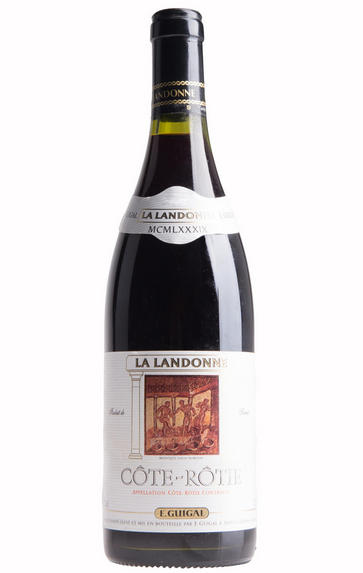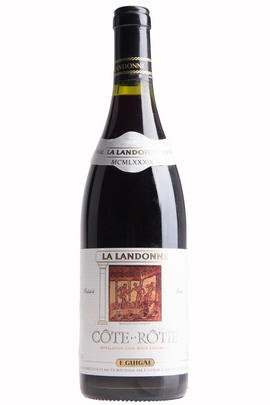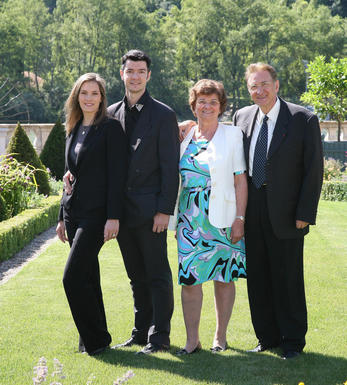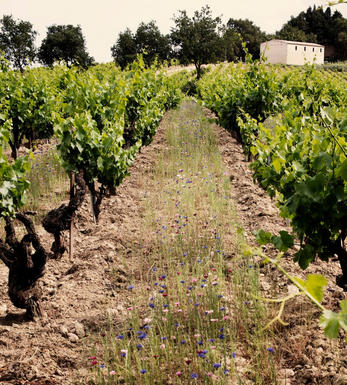
2008 Côte-Rôtie, La Landonne, E. Guigal, Rhône

Critics reviews
Jeb Dunnuck - 14/09/2015
As I have written many times before, no one in the wine world is better at ‘raising’ a wine (or as the French call it elevage) than Marcel Guigal, who learned the skills from his father, Etienne. Because everyone tends to focus on vintage conditions and terroir, the importance of a wine’s elevage is often overlooked, but Guigal’s unusually long tank, foudre and small barrel aging regime for all his red wines as well as several of his whites results in an array of remarkable wines time and time again. Even the most challenging vintages, which often taste under-nourished, vegetal and thin in their first year or two of life, tend to take on concentration and character, turning out to be some of the finest wines in many of the most difficult Rhone vintages. Moreover, Guigal’s wines always taste better out of bottle than from barrel, which speaks to his honesty and integrity as well as to his brilliance in deciding how long to age a wine in wood or tank, as well as choosing the perfect moment to bottle it. None of this is as simple as it might sound, and that’s why Marcel Guigal gets my vote as the reigning genius in terms of the upbringing of his wines.
The Guigals are the largest landholders in Cote Rotie and produce 35-40% of this hallowed appellation’s production. Five cuvees are produced in every vintage, the three single vineyard offerings, the Chateau d’Ampuis (a blend of top sites aged 38 months in 100% new French oak casks), and their largest production offering, the Brune et Blonde (which is aged in small barrels and usually co-fermented with 3-5% Viognier depending on the vintage).
Robert Parker - Wine Advocate #198 Dec 2011
About this WINE

Maison Guigal
Guigal is the most famous produer in Côte Rôtie and one of the finest in the Rhône Valley. It was founded in 1946 by Etienne Guigal, following his departure from Vidal-Fleury, where he had worked for just under twenty years. His son, Marcel, joined the company in 1961 and is now the head of the company.
Guigal pioneered the notion of single vineyard Côte Rôties and his 3 most famous wines, La Landonne, La Mouline and La Turque are amongst the most sought after wines in the world today.
Marcel Guigal's attitude to winemaking is typical of the simple genius that one seems to stumble upon when looking at any of the world's greatest winemakers - low yields, organic viticulture and little or no intervention in the cellars - in short, a respect for nature and a passion for the wine itself.
Robert Parker commented on Marcel Guigal that "In the past 20 years I have spent visiting wineries and vignerons, I have never seen a producer so fanatical about quality as Marcel Guigal."

Côte-Rôtie
Côte-Rôtie is one of the most famous of the northern Rhône appellations, with some single vineyard cuvées now selling for the same prices as First Growth Bordeaux. It is the northernmost outpost of the Syrah grape.
Côte-Rôtie translates as ‘roasted hillside’, as the south-facing slopes are exposed to the maximum-possible sunlight. Vines have been planted here since Roman times, although the appellation was only created in 1940. Today it covers 500 hectares, with 276 hectares of vineyards stretched across eight kilometres.
Phylloxera devastated vineyards in the late 1800s and Côte-Rôtie’s fortunes remained in the doldrums for another century. After the War, a farmer would receive double the price for a kilo of apricots as for a kilo of grapes, hence vineyards were grubbed up and wine production became increasingly smaller.
It has only really been recognised as a top-quality wine-producing area since the 1970s, with Guigal being the main impetus behind its revival. The two best slopes, Côte Brune and Côte Blonde, rise steeply behind Ampuis and overlook the river. The Côte Brune wines are much firmer and more masculine (the soils are clay and ironstone), whereas the Côte Blonde makes wines with more finesse and elegance due to its light, sandy-limestone soil. Both the Côte Brune and Côte Blonde vineyards rise to 1,000 feet, with a gradient of 30 to 50 degrees.
The wines are made from the Syrah grape, however up to 20 percent of Viogner can be used in the blend, adding finesse, elegance and floral characteristics to the wine. Viognier ripens more quickly than Syrah and the appellation rules stipulate that the grapes must be added to the fermentation – rather than blended later. The best Côte-Rôtie are very deep in colour, tannic and spicy, and need 10 years to evolve and develop.
There are nearly 60 official vineyards (lieux-dits); the best-known are: La Mouline, La Chatillonne (Vidal-Fleury, owned by Guigal) and La Garde (Rostaing) in Côte Blonde; La Viallière, (Rostaing), La Landonne (Guigal, Rostaing) and La Turque (Guigal) in Côte Brune.
Styles vary from heavily-extracted tannic wines which need many years to soften through to lighter, supple and less-structured wines which do not require extended bottle ageing. The most famous wines of Côte-Rôtie are Guigal’s three single-vineyard cuvées: La Mouline, La Turque and La Landonne. These are aged in new wood for 48 months, and demand for them amongst connoisseurs and collectors is significant, leading to prices sometimes comparable to Bordeaux First Growths.
Recommended producers: Guigal, Gerrin, Rostaing, Ogier, Burgaud
Best vintages: 2006, 2005, 2004, 2001, 1999, 1991, 1990, 1985

Syrah/Shiraz
A noble black grape variety grown particularly in the Northern Rhône where it produces the great red wines of Hermitage, Cote Rôtie and Cornas, and in Australia where it produces wines of startling depth and intensity. Reasonably low yields are a crucial factor for quality as is picking at optimum ripeness. Its heartland, Hermitage and Côte Rôtie, consists of 270 hectares of steeply terraced vineyards producing wines that brim with pepper, spices, tar and black treacle when young. After 5-10 years they become smooth and velvety with pronounced fruit characteristics of damsons, raspberries, blackcurrants and loganberries.
It is now grown extensively in the Southern Rhône where it is blended with Grenache and Mourvèdre to produce the great red wines of Châteauneuf du Pape and Gigondas amongst others. Its spiritual home in Australia is the Barossa Valley, where there are plantings dating as far back as 1860. Australian Shiraz tends to be sweeter than its Northern Rhône counterpart and the best examples are redolent of new leather, dark chocolate, liquorice, and prunes and display a blackcurrant lusciousness.
South African producers such as Eben Sadie are now producing world- class Shiraz wines that represent astonishing value for money.


Buying options
Add to wishlist
Description
A kaleidoscopic nose of rosewater, gunpowder, spice, anise, clove, lavender and hung meats, which changes with every turn of the glass and evokes the stunning scenery of the Northern Rhone valley in my mind! Just as amazing on the palate, with wonderful fresh fruit with a marked and intriguing mineral edge. The blackberry and black cherry fruit sweeps onto the palate and is finished off by fine, long tannins and flavours of tapenade and smoke. One of the best Rhones I’ve ever tasted.
Hamish Orr-Ewing, BBR Fine Wine
wine at a glance
Delivery and quality guarantee